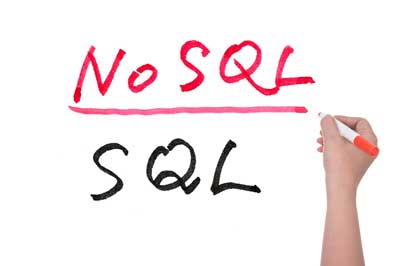- Advertising
- Bare Metal
- Bare Metal Cloud
- Benchmarks
- Big Data Benchmarks
- Big Data Experts Interviews
- Big Data Technologies
- Big Data Use Cases
- Big Data Week
- Cloud
- Data Lake as a Service
- Databases
- Dedicated Servers
- Disaster Recovery
- Features
- Fun
- GoTech World
- Hadoop
- Healthcare
- Industry Standards
- Insurance
- Linux
- News
- NoSQL
- Online Retail
- People of Bigstep
- Performance for Big Data Apps
- Press
- Press Corner
- Security
- Tech Trends
- Tutorial
- What is Big Data
Is NoSQL the Future of Big Data?

Typically, the way Gartner and other market analysts judge adoption levels of a new technology is to assess their market shares. For example, the dollars and cents signs point to which products are losing market shares or gaining market shares, and that indicates shifts in the overall adoption or abandonment rates of any particular product or vendor.
You Can’t Just Follow the Money Trail to See Where DBs are Headed

In the case of big data technologies, that isn’t so easy. Most of the strong contenders in this arena are open source. So, while individual developers can tout their numbers of downloads, this doesn’t mean that the product was ever installed or that it’s being used, or what, if anything, it’s actually being used for. Most businesses are extraordinarily hush-hush when it comes to their proprietary secrets (like whether they’re using or seeing success with Hadoop or NoSQL), for fear that they’ll tip their competitors off regarding their success, or potentially their lack of success, with big data adoption.
That’s why it’s so difficult to say with any reasonable certainty how much of the database market is shifting towards NoSQL database technologies like MongoDB, Cassandra, MarkLogic, Couchbase, and Basho. The only way to judge, since there are no market share dollars and cents signs to point the way, is to look at the paid vendors that are actually losing shares. There is no doubt that businesses are taking on new products to address their big data needs—so we can look at the major suppliers of these products and solutions and tell from there whether businesses are utilizing the “big three” (IBM, Microsoft, and Oracle) or not. If not, we can safely say they are adopting some of the many open source options available.
But You Can Look at Who’s Losing Those Market Shares
Of the big three, only one has seen an increase in revenues for their enterprise database solutions (Microsoft), and that gain is relatively minuscule (up only one point), while the other two have lost market shares in terms of revenue (to the tune of between one and six points apiece). Obviously, that’s a clear sign that businesses are using something else—but what?
MongoDB and Cassandra are gaining significant ground, and Gartner estimates that as much as one-quarter of the market is disappearing into these open source solutions. The trend of open source is prominent in the realm of big data. Part of the driving forces behind this trend are related to costs—even with ‘free open source’ products, companies can invest many millions in products (offloading data, data cleansing, data storage), not to mention the months or more of labor involved in taking on a big data initiative.
The Future of NoSQL and the Database

Does this mean that proprietors who invested big in big data are slated to go belly up? In the long term, maybe. In the short term, not so much. Most businesses aren’t scrapping their old, reliable relational DBs like SQL. They may not be making lots of new investments in these technologies, but they certainly aren’t abandoning the DB infrastructures that are literally the backbone of their enterprises. Instead, NoSQL options are being added to, in some cases tacked on to, the traditional enterprise data warehouses. However, in the long term, once the kinks have been worked out and the new data storage and processing infrastructures are performing well, it’s highly likely that the old proprietary way of doing things will eventually go the way of the horse and buggy, and the Walkman.
Are you ready for the future of unstructured data and the NoSQL database? You can get started today with the promise of the data lake. Take advantage of this limited offer—discover the first Full Metal Data Lake as a Service in the world. Get 1TB free for life - limited to 100 applicants. Start here.
Readers also enjoyed:

Is Virtual Reality a Viable Tool for Your Brand?


Leave a Reply
Your email address will not be published.